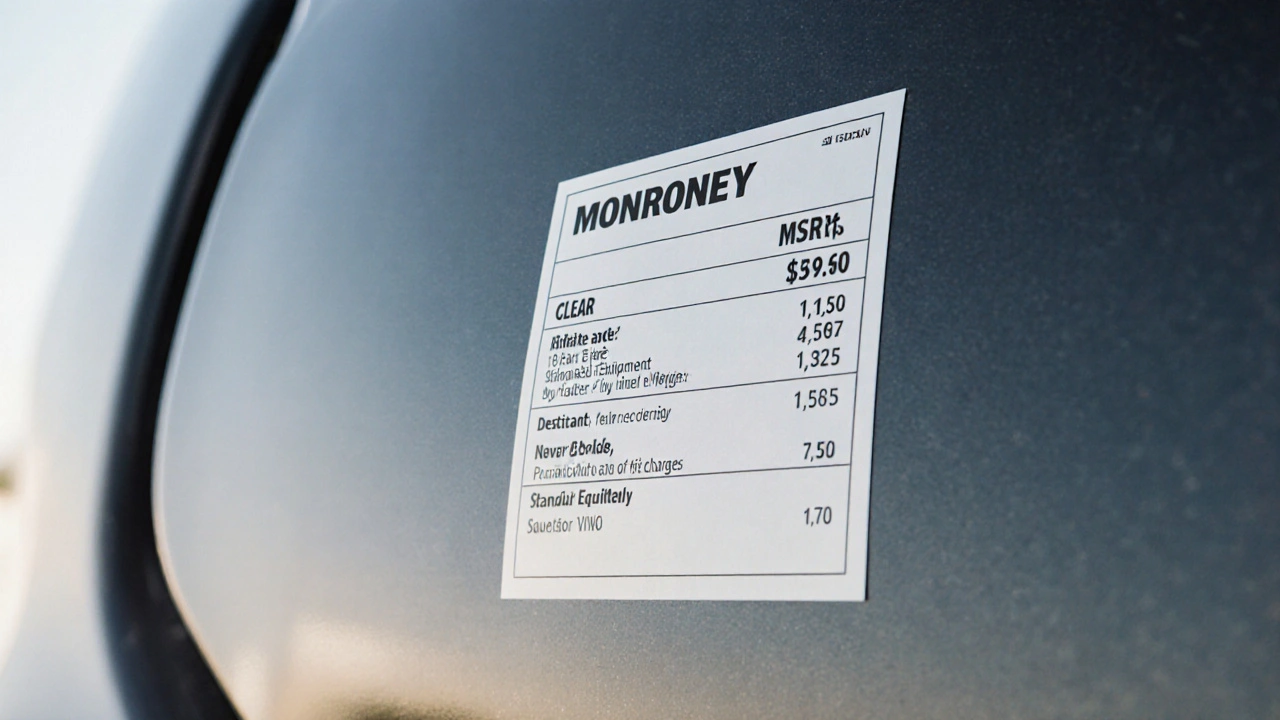When you buy a used car, the used car window sticker, a label originally placed on new vehicles by manufacturers to show pricing and features. Also known as a Monroney label, it’s not just a relic—it’s a trusted record of what the car was worth when new. Even though it’s no longer attached to the car you’re looking at, that sticker’s data lives on in vehicle history reports and dealer records. Knowing what it contained helps you spot a good deal—or avoid a trap.
The Monroney label, a federally required document on all new cars sold in the U.S. lists the manufacturer’s suggested retail price (MSRP), standard features, optional packages, fuel economy ratings, and the dealer invoice cost. That invoice number? It’s the price the dealer paid. If a used car was originally priced at $30,000 and the dealer paid $27,000, you’re looking at a car with room to negotiate—even if it’s three years old. You can’t see the sticker on the used car, but you can find its data using the VIN. That’s how you know if the current asking price is fair.
Some sellers hide the fact that a car had expensive options—like leather seats or a sunroof—listed on the original sticker. Others list a high MSRP but never actually sold it at that price. Without checking the original window sticker, you might think you’re getting a bargain when you’re really paying what someone else already paid. The sticker also shows fuel economy numbers that match the EPA ratings. If a car claims 30 mpg but the sticker says 25, something’s off. That’s not just misleading—it’s a red flag.
Used car window stickers also reveal depreciation. If a car originally cost $35,000 and now sells for $15,000 after five years, that’s normal. But if it’s $22,000? You’re paying too much for a car that’s lost value faster than average. Some models hold value better—like Toyota trucks or Honda Civics—and their original stickers help prove it.
When you’re shopping for a used car, ask the dealer for the original window sticker. Reputable sellers will have it. If they don’t, run the VIN through a free vehicle history report. You’ll get the same data: trim level, options, factory pricing. That’s your baseline. Don’t let a salesperson talk you into a price without it. The used car window sticker isn’t just paperwork—it’s your power to negotiate with facts, not feelings.
Below, you’ll find real guides on what to look for in car pricing, how to decode dealer invoices, and how to spot when a used car’s history doesn’t add up. These aren’t theory pieces—they’re tools you can use the next time you walk onto a lot.
Posted by
Liana Harrow
14 Comments

Learn how to read a used car's window sticker to verify features, spot lies, negotiate better prices, and avoid overpaying. The Monroney label holds the truth - if you know where to look.
read more